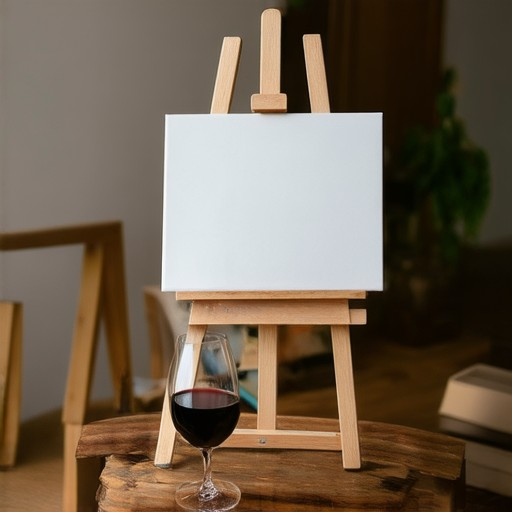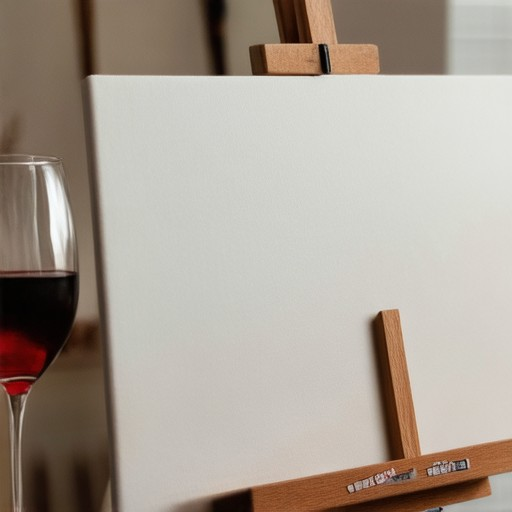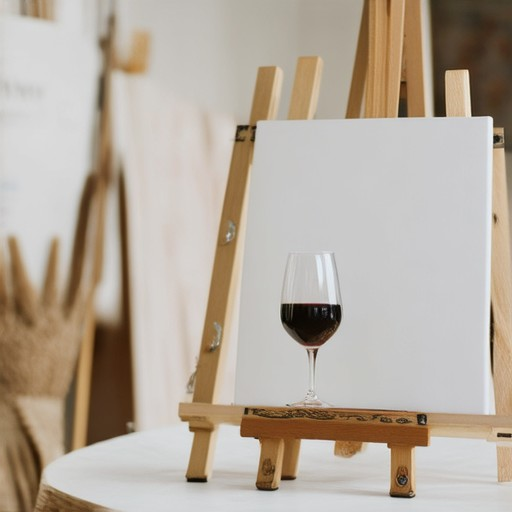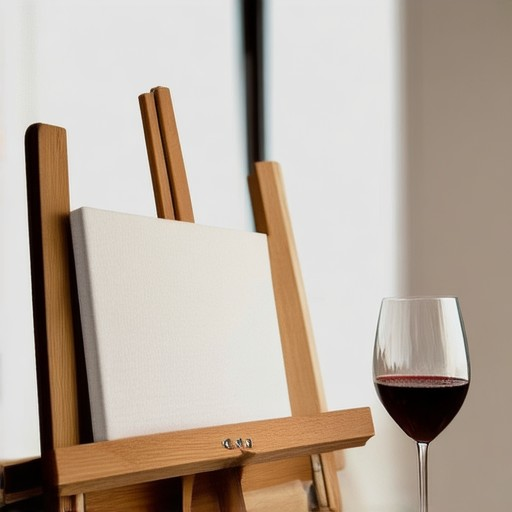Discover the harmonious blend of wine and art, where each sip and stroke creates a unique sensory experience. Wine and art pairing is more than just a trend—it’s a celebration of craftsmanship, culture, and connection. Whether you’re sipping Chianti while gazing at a Tuscan landscape or swirling Sauvignon Blanc as you paint your own masterpiece, the intersection of wine and art offers endless possibilities. From the symbolic meanings of wine in art to the emotional impact of pairing fine wines with captivating canvases, this article delves into the artful pairing of wine and art. Explore how different art genres complement various wines, the history of wine and painting, and the benefits of combining these two beloved pursuits. Join us as we uncover the deeper meanings behind wine and art, and discover how they together create a truly unforgettable experience.
Key Takeaways
– Wine as a Divine Gift: Wine has deep roots as a sacred symbol, revered in ancient civilizations and linked to divine approval and immortality.
– Symbol of Sophistication: It serves as a marker of advanced society and refinement, reflecting cultural achievements and opulent gatherings.
– Abundance and Celebration: Wine often symbolizes abundance and joy, with depictions in art highlighting grand feasts and prosperity.
– Rebellion and Freedom: Historically, wine has symbolized rebellion, playing a role in defying authority, as seen during the French Revolution.
– Contemporary Relevance: Wine continues to inspire modern artists, bridging historical and cultural divides while remaining a universal symbol of luxury.

How to Pair Wine with Art
Pairing wine with art is a unique and enriching experience that combines the sensory pleasure of fine wine with the visual and emotional impact of art. To make the most of this pairing, consider the following guidelines:
Understanding the Relationship Between Wine and Art
The connection between wine and art extends beyond mere taste—it involves color, texture, and aroma. Just as art evokes emotions, wine can amplify those feelings depending on its characteristics. Here’s how to approach the pairing:
- Color Palette Matching: Choose wines that complement the dominant colors in the artwork. Bold reds and deep blues pair well with vibrant paintings, while light, crisp whites suit minimalist or pastel artworks.
- Aroma and Flavor Complementarity: Consider the wine’s bouquet and how it interacts with the artwork’s subject matter. Earthy reds may complement landscapes, while floral whites can mirror intricate patterns in abstract art.
- Cultural Context: wines from regions with rich artistic traditions, like Italy or France, often resonate beautifully with art from those cultures.
Best Wine Choices for Different Art Styles
Depending on the art style, select wines that harmonize with the piece’s atmosphere:
Renaissance Art
Rich, full-bodied reds like Italian Chianti or French Burgundy complement the warm colors and intricate details of Renaissance paintings.
Impressionist Art
Crisp, light whites such as Sauvignon Blanc or Pinot Grigio pair well with the soft, pastel tones of Impressionist works.
Abstract Art
Medium-bodied reds or sparkling wines can provide contrast and depth to abstract pieces, mirroring their non-conventional nature.
Modern Art
Experimental wines, such as those from the Napa Valley or Tuscany, can complement the avant-garde nature of modern art.
Creating the Perfect Setting
Where you enjoy the art and wine pairing matters:
- Art Galleries: Opt for sophisticated wines like Bordeaux or Burgundy to match the elegant ambiance.
- Home Settings: Try approachable wines like Sonoma Cabernet or Italian Prosecco for a more relaxed experience.
- Special Occasions: Sparkling wines or dessert wines can elevate weddings or private art viewings.
Wine Serving Tips
Ensure your wine enhances the art experience by:
- Serving reds at room temperature and whites slightly chilled.
- Using appropriate wine glasses that align with the wine’s prestige and flavor profile.
- Considering the wine’s age, as mature wines often complement serious art collections.
Exploring Interactive Experiences
Some wineries offer unique pairing events, such as wine tastings accompanied by live music or art exhibitions. These experiences can deepen your appreciation of both wine and art.
For more insights into wine and art pairings, explore our wine education resources and discover how these two worlds can intersect in meaningful ways.
What is it called when you drink wine and paint?
The act of drinking wine while painting is often referred to as drunk tanking . This practice involves consuming alcohol, typically wine, to lower inhibitions and encourage creative expression. The term gained prominence through artists like Vincent van Gogh, who famously used alcohol as a means to overcome self-censorship and produce bold, expressive works. Drunk tanking is seen as a method to bypass traditional artistic constraints, leading to more experimental and unconventional pieces.

What Pairs Nicely with Wine?
Wine pairing is an art that enhances the dining experience, bringing together the perfect harmony of flavors. Here are some delightful combinations to consider:
- Red Wines: These robust wines pair excellently with hearty meats like steak , lamb , and pork . They also complement rich, flavorful dishes such as Ribeye or Osso Buco .
- White Wines: Light and crisp whites are perfect for seafood, such as salmon , trout , or shrimp . They also pair well with chicken dishes and light pasta options like pesto or carbonara .
- Sparkling Wines: Ideal for celebrations, sparkling wines are a great match for appetizers , charcuterie , and light bites . They add a festive touch to any occasion.
- Cheese & Desserts: Many cheeses complement wine beautifully. Brie , Camembert , and blue cheeses pair well with Chardonnay or Sauvignon Blanc . For dessert, dark chocolate or tiramisu can be wonderful matches with Port or Dessert Wines .
- Regional Specialties: Wines from specific regions often have unique flavor profiles that suit local cuisines. For instance, Italian Chianti pairs perfectly with pasta and risotto , while French Burgundy is ideal with beef tartare or roasted game meats .
Remember, the key to successful wine pairing is personal preference and experimentation. There are no strict rules, so feel free to explore and discover your own favorites!

What Does Wine Symbolize in Art?
Wine has long held profound significance in art, serving as a multifaceted symbol across various cultures and eras. Its representation spans from ancient rituals to contemporary expressions, embodying themes of celebration, luxury, and cultural achievement.
-
The Divine Beverage
In many ancient civilizations, wine was seen as a divine gift. The Egyptians depicted it in hieroglyphs, while the Greeks associated it with the elixir of life, often linking it to their gods. This sacred status elevated wine to a symbol of divine approval and immortality.
-
Civilization and Culture
Wine has historically been a marker of advanced society and refinement. From ancient Greek symposia to Renaissance feasts, it signified sophistication and the ability to host elaborate gatherings. Its presence in art often reflected the wealth and taste of the collector or patron.
-
Abundance and Celebration
Wine has long been a symbol of abundance and joyous occasions. Paintings and sculptures often depict overflowing wineskins or grand feasts, emphasizing the association with happiness and prosperity. This theme is particularly prominent in Baroque art, where opulence was a central motif.
-
Rebellion and Revolution
In certain contexts, wine has symbolized rebellion against authority. During the French Revolution, for instance, wine played a role in public celebrations and defiance against the monarchy, embodying the spirit of freedom and resistance.
-
Modern Interpretations
Contemporary artists continue to explore wine’s symbolism, often using it to reflect modern lifestyles and societal changes. Wine remains a universal subject, bridging historical and cultural divides while retaining its associations with luxury and celebration.
Through its rich history and enduring appeal, wine continues to inspire artists and thinkers, serving as a testament to human ingenuity and shared joy.
Explore Fine Vines’ curated wine collections and educational resources to dive deeper into the cultural significance of wine.
What is the Meaning of Art and Wine?
Art and wine are two profound expressions of human creativity, culture, and enjoyment. Art encompasses a vast spectrum of human expression, ranging from visual mediums like painting, sculpture, and photography to performing arts such as music, theater, and dance. It serves as a medium for storytelling, personal reflection, and emotional connection, often transcending boundaries of time and space.
Wine, on the other hand, is a liquid crafted from the fermentation of grape sugar, evolving into a beverage rich in history and cultural significance. Beyond its role as a refreshment, wine carries the essence of its origin, reflecting the soil, climate, and techniques of its production. It has been a symbol of celebration, sophistication, and companionship across civilizations.
The intersection of art and wine lies in their shared ability to inspire emotion, foster social connections, and embody craftsmanship. Like a masterpiece painting, a fine wine is a labor of love, born from passion and attention to detail. Both art and wine invite us to savor their complexity, whether through the visual appeal of a painting or the nuanced flavors of a wine.
Together, art and wine create moments of joy, introspection, and shared experience, enriching our lives in ways that transcend mere consumption.

The Deeper Meaning of Wine
Wine transcends its status as a beverage, carrying profound cultural, historical, and emotional significance. Its essence goes beyond mere consumption, serving as a vessel for storytelling, tradition, and connection.
A Historical Tapestry
Wine has been a cornerstone of human civilization, dating back thousands of years. From ancient civilizations to modern times, it has symbolized prosperity, celebration, and resilience. In many cultures, wine is integral to religious ceremonies, marking sacred moments and commemorating milestones.
Cultural Elixir
Beyond its liquid form, wine embodies the essence of life’s celebrations and sorrows. It has been a subject of art, literature, and film, reflecting the complexities of human existence. In works like “The Canterbury Tales” and films like “Sideways,” wine serves as a mirror to the human condition, capturing joy, heartache, and redemption.
Symbol of Transformation
Wine often represents transformation, both personal and universal. It transforms grapevines into something extraordinary, mirroring the ways people evolve over time. For many, it symbolizes the journey from innocence to wisdom, much like the process of aging fine wines.
Sacred and Profane
In some traditions, wine holds divine properties, while in others, it signifies indulgence. It has been both a source of joy and a catalyst for reflection, guiding individuals through life’s ups and downs.
Modern Appreciation
Today, wine appreciation extends beyond drinking. It involves understanding its origins, the terroir, and the craftsmanship behind each bottle. Fine Vines offers comprehensive guides to help enthusiasts explore these nuances, from tasting notes to vineyard insights.
Conclusion
Wine is more than a drink; it is a testament to human ingenuity, culture, and emotion. Its stories are etched into history, inspiring art and philosophy. By appreciating wine, we connect with centuries of tradition while embracing the present. Explore the world of wine with Fine Vines, where every sip tells a story. Explore our wine tasting guides and discover the rich tapestry of wine culture.



0 Comments